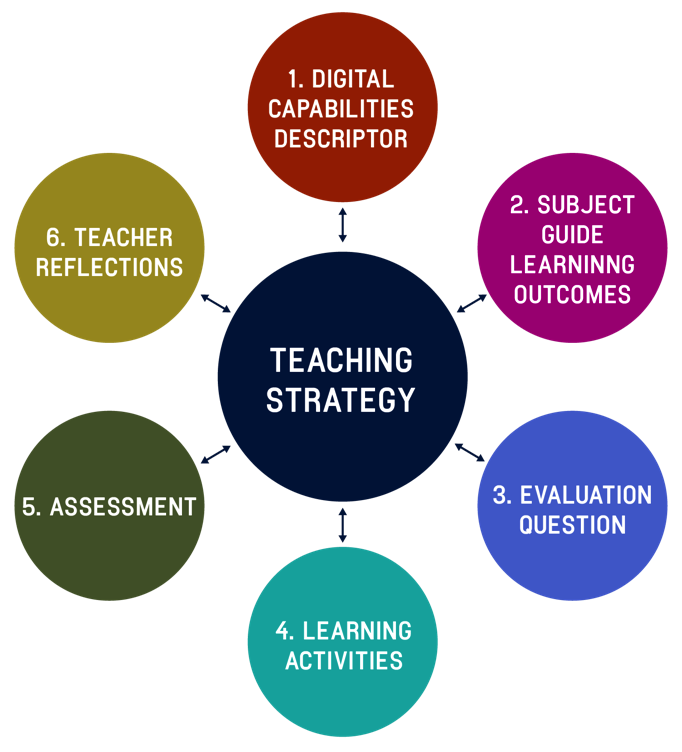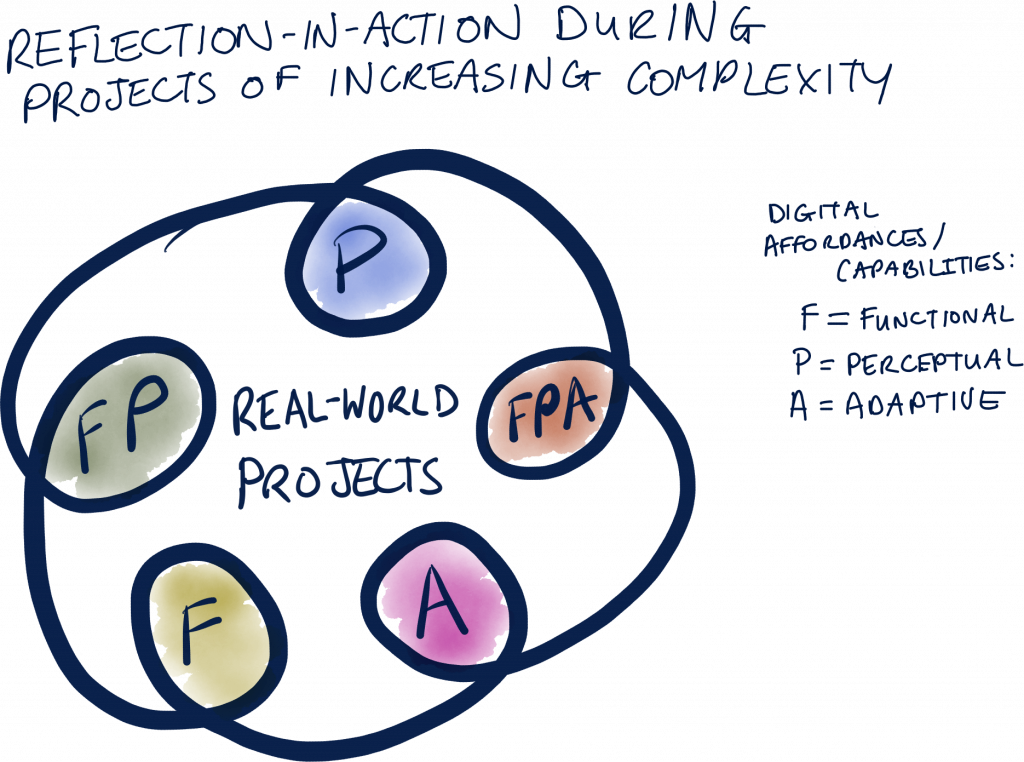Developing a Teaching Strategy
Figure 1: Developing a teaching strategy
The Digital Capabilities Descriptors are at the heart of the learning model. These Descriptors interpret digital practice domains (e.g. collaboration) and associated capabilities through Functional, Perceptual and Adaptive affordance lenses.
The practice domains then need to be mapped to the curriculum with assessment and learning activities planned.
Implementing the teaching strategy includes iterative reflection cycles on the Functional, Perceptual and Adaptive digital capabilities the students are developing.
Experiencing the learning model in iterative cycles over the term of the degree program supports the student in digital work readiness. In turn, graduates can continue their professional learning and career development using the same affordance lenses, with reflection-on-action but especially reflection-in-action by now second nature.
Figure 2: Reflection-in-Action
On this page you will find reflections from educators, who discuss their initial efforts to implement the learning model. You will also find case studies, describing how the model has informed adaptation of curriculum in Design and Engineering. There are also some sample teaching materials (slide presentations).
RESOURCES
key report
adapting curriculum case studies
Educator Reflections
Dr Tom Lee talks about teaching communication, using Slack, in a studio course, in the Masters of Design at UTS. This interview has been left extended to allow viewers a clear understanding of the context of Tom’s teaching and use of the learning model.

